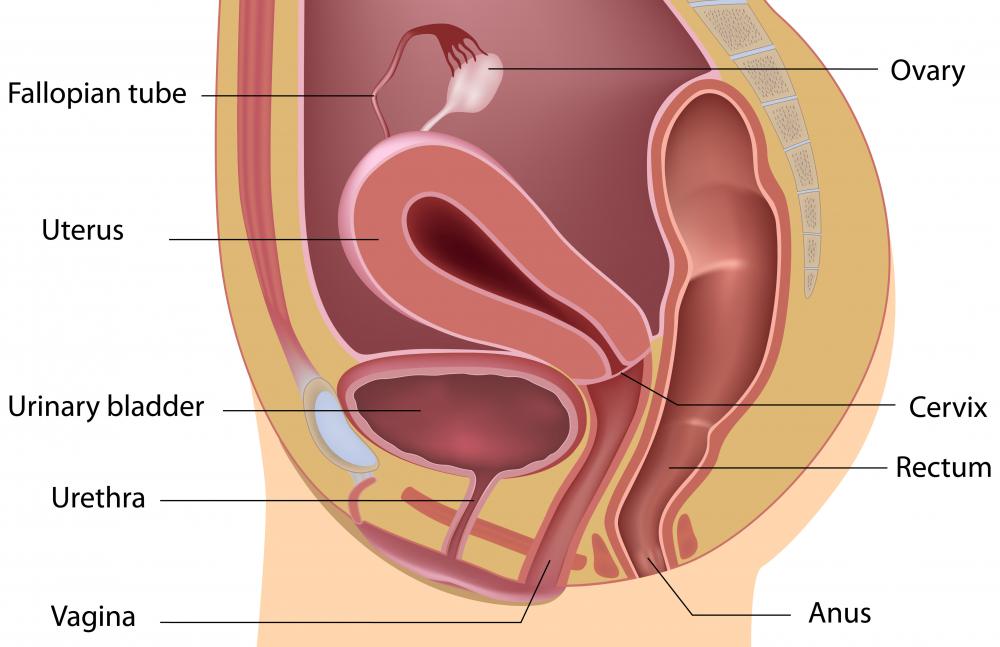At WiseGEEK, we're committed to delivering accurate, trustworthy information. Our expert-authored content is rigorously fact-checked and sourced from credible authorities. Discover how we uphold the highest standards in providing you with reliable knowledge.
What are Adnexal Tumors?
Adnexal tumors are tissue masses that grow in some reproductive areas of a woman’s pelvic region such as the ovaries and fallopian tubes. These tumors can be benign adnexal masses or malignant growths. Many benign adnexal tumors develop without any symptoms and clear up on their own. Adnexal tumors are usually more likely to be benign than cancerous in cases where female patients have reached reproductive age.
Benign adnexal tumors may be surgically removed if they cause symptoms. Some common symptoms of adnexal tumors include stomach pain, indigestion and nausea. Shortness of breath, unusual fatigue and changes in urination or bowel functions may occur with an adnexal growth. In some cases, individuals have experienced pain in the leg or back, excessive vaginal bleeding and unexplained weight changes with adnexal tumors.

Ovarian cancer tumors are adnexal tumors that begin in a woman’s ovaries. The ovaries are organs of the female reproductive system that create eggs. Many cases of ovarian cancer have symptoms that are vague and not clearly linked to the presence of cancer such as bloating, abdominal fullness or pain in the abdomen. Women with vague or questionable symptoms may benefit from a medical evaluation. In cases that are not diagnosed early, cancer can spread from the ovaries to other parts of the body.

Women with a family history of ovarian cancer or breast cancer and female patients who have a personal history of breast cancer are generally at greater risk of developing ovarian cancer. Individuals with ovarian cancer typically have an increased risk of dying from the disease if they are over the age of 55. Estrogen replacement therapy that is given without progesterone may heighten a woman’s ovarian cancer risk if she receives this therapy for five years or longer.

Many doctors use results of a pelvic examination, blood tests and medical imaging tests of the abdomen, such as a magnetic resonance imaging (MRI) scan, computerized tomography (CT) scan or ultrasound examination, to help them diagnose cases of ovarian cancer. Physicians often treat ovarian cancer with surgical removal of the disease. The surgery may include removal of one or more parts of the female reproductive system such as the uterus, fallopian tubes and ovaries. In some instances, patients may receive chemotherapy after cancer surgery to kill any remaining cancer cells.

Cancer of the fallopian tubes is a type of malignant adnexal tumor that strikes the fallopian tubes that connect each ovary to the uterus. These tubes are used to transport eggs from a woman’s ovaries to her uterus. Unusual bleeding or discharge from the vagina and abdominal pressure may occur in patients with fallopian tube cancer. Physicians typically diagnose this type of cancer after several medical tests that often include a pelvic examination, tissue biopsy and imaging tests. Surgery and chemotherapy are commonly-used methods of treatment for fallopian tube cancer.
AS FEATURED ON:
AS FEATURED ON:
















Discuss this Article
Post your comments